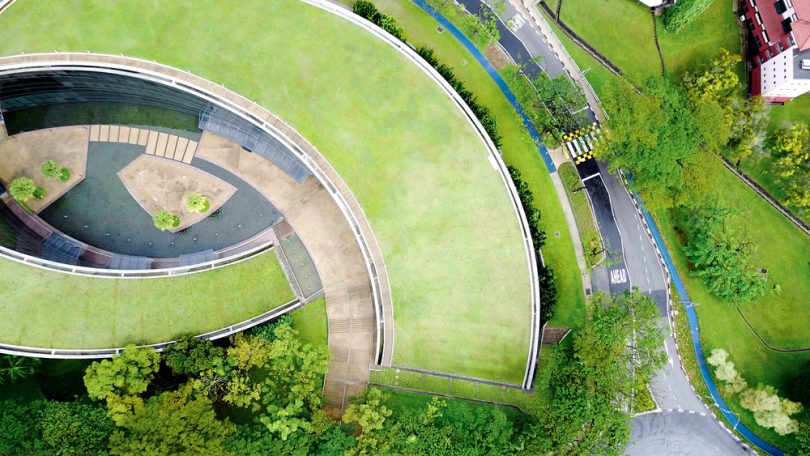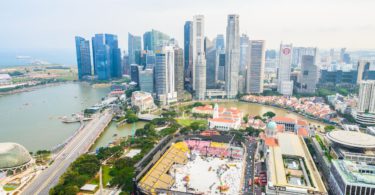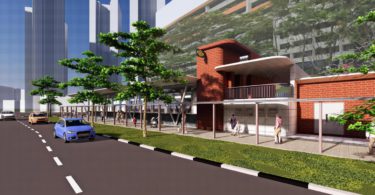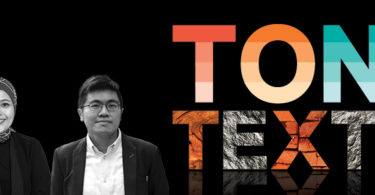By Anisa Pinatih
There have been discussions that buildings need to be more resilient to better prepare occupants for dealing with emergencies such as the COVID-19 pandemic; and that Green-platinum-rated buildings may not always perform better than uncertified ones in ensuring wellness during a prolonged isolation.
The well-being of occupants in a pandemic may not only be influenced by environmental factors that involve good spatial designs, but also intangible variables like social support and mental agility. That being said, the role of Green design cannot be overlooked either because its evidence in improving wellness in a non-pandemic situation has been widely documented.
The question is then whether certifications in Malaysia and Singapore need to go beyond Green criteria, by employing a system such as Resiliency Action List (RELi), for example.
WHAT IS RELi?
Just like Leadership in Energy and Environmental Design (LEED), RELi is a rating system (RELi) developed by the U.S. Green Building Council (USGBC) but with added emphasis on resiliency, such as acute hazard preparation and adaptation, along with chronic risk mitigation at the building and neighbourhood scale.
RELi combines disaster-specific design criteria with general resilience criteria, like energy-saving and self-sufficiency. Instead of only benchmarking sustainability, RELi improves the resilience accountability of a project at facility planning, design, operations and maintenance levels. It evaluates whether buildings are prepared to withstand shocks like hurricanes, floods, droughts, earthquakes and social and/or economic instability.
HOW RELEVANT IS RELi IN A PANDEMIC?
RELi incorporates many LEED prerequisites and credits for sustainability. What is different is probably the criteria such as access to first aid, emergency supplies, water, food and communications, as well as adaptive designs for extreme weather to deal with, say, a power outage and clean water shortage during a heavy flood.
In the case of a pandemic, there might be an impact to financial stability, access to services, as well as health and well-being. The holistic approach of RELi is a response to this, allowing for crisis preparation and adaptation, as well as risk mitigation.
Before considering the adoption of a system such as RELi, it is important to first understand the current status quo in both countries, as summarised in a report by Asia-Pacific Economic Cooperation (APEC) below.
Read more: Peter Ayres on Post-Pandemic Architecture and Design
HOW DOES MALAYSIA CERTIFY ITS BUILDINGS?
While reference standards are set by the government, Malaysia draws from international standards such as ASHRAE. ASHRAE 90.1 on energy efficiency is widely applied in high-rise commercial buildings in Malaysia. But in general, the government takes a voluntary approach to Green features in buildings. Codes of practice and standards for indoor air quality as well as water and resource efficiencies are not mandatory; and policies on energy, water and the environment have not affected the building design and construction.
Although there is no mandatory standard, there is a common rating system—the Green Building Index (GBI), which is similar to LEED. Buildings and townships can apply for certifications for energy efficiency; indoor environmental quality; sustainable site planning and management; materials and resources; water efficiency; and innovation. A noteworthy point is that Malaysia (and Singapore) allows the use of equivalent standards in place of the referenced standards in the regulations and codes of practices.
HOW DOES SINGAPORE CERTIFY ITS BUILDING?
Most of the building codes by the Building and Construction Authority (BCA) is developed by the authority itself. Green Mark and LEED are the two most popular rating systems in Singapore, although LEED has only a 2 per cent market share. Since Green Mark is a mandatory system designed for the tropical climate, most of the Green buildings in Singapore are certified Green Mark.
Green Mark was launched in January 2005 to promote sustainability in the built environment of the tropics. Since then, it has been revised three times, with the 2013 version incorporating calculations of carbon emission. Green Mark certification can also have a positive effect on corporate image and the leasing and resale value of buildings.
Read more: Buildings in Singapore aiming for best-in-class energy performance certification
Green Mark is applied to new and existing projects. The most recent revision requires building design to meet at least a 28-per-cent improvement in energy efficiency from 2005 energy standards. There is also a minimum prescribed system efficiency of the building cooling system and monitoring in commercial and industrial buildings.
The Building Control Act (2008) Code (BCA A 2006) requires all new building works greater than 2,000 square metres to be Green Mark certified. Projects that achieve higher ratings qualify for financial and other incentives.
CONCLUSION
Malaysia and Singapore have successfully evolved ‘Greener’ codes to increase building performance by utilising different approaches that fit their economies. It may be true that resiliency—the capacity to quickly and consistently overcome stressors and shocks—is yet to be incorporated into the system. But then again, in the context of the COVID-19 crisis, the governments’ responses were swift and comprehensive, and a form of resiliency in its own right.
Read more: Handling COVID-19 in Asia: Building, Converting, Facilitating & Managing Spaces
Also read: Handling COVID-19 in Singapore: Government Mitigation and Regulation on Spatial Use
Nevertheless, buildings and cities do need to become more resilient to face any future uncertainty as a result from either a pandemic, climate change or a natural disaster. Adopting a system like RELi or creating a local framework will help to gear countries towards this goal; but before that, sustainability must be applied across the whole spectrum of the construction sector because without it, resiliency would seem a far cry from where we are at the moment.
Disclaimer: Construction+ makes reasonable efforts to present accurate and reliable information on this website, but the information is not intended to provide specific advice about individual legal, business, or other matters, and it is not a substitute for readers’ independent research and evaluation of any issue. If specific legal or other expert advice is required or desired, the services of an appropriate, competent professional should be sought. Construction+ makes no representations of any kind and disclaims all expressed, implied, statutory or other warranties of any kind, including, without limitation, any warranties of accuracy and timeliness of the measures and regulations; and the completeness of the projects mentioned in the articles. All measures, regulations and projects are accurate as of the date of publication; for further information, please refer to the sources cited.
Hyperlinks are not endorsements: Construction+ is in the business of promoting the interests of its readers as a whole and does not promote or endorse references to specific products, services or third-party content providers; nor are such links or references any indication that Construction+ has received specific authorisation to provide these links or references. Rather, the links on this website to other sites are provided solely to acknowledge them as content sources and as a convenient resource to readers of Construction+.











